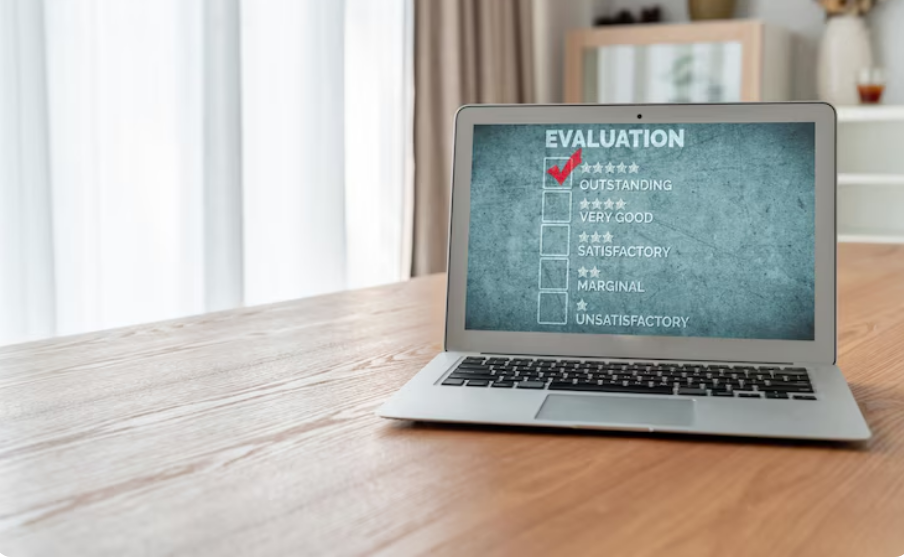Introduction: The Strategic Value of Patient Experience Surveys
Patient experience surveys are no longer just a checkbox for compliance—they are strategic tools that drive healthcare improvement and business growth. These healthcare surveys collect more than satisfaction ratings; they capture the patient’s full care journey, helping organizations identify service gaps, improve communication, and streamline operations.
Research supports this shift. According to a 2023 Press Ganey study, hospitals focusing on patient experience reported a 17% increase in referral volumes and 21% higher online review ratings. That’s because satisfied patients become vocal advocates, helping you grow your brand organically.
The right survey strategy provides two critical advantages: operational insight and patient-generated growth. In this article, we’ll explore how to extract value from feedback, use survey analytics for clinical improvement, and drive referrals—all while improving patient satisfaction.
Why Patient Experience Matters in Modern Healthcare
How Experience Drives Outcomes
Patient experience now directly impacts care quality ratings, reimbursement levels, and brand perception. CMS ties hospital payments to HCAHPS scores, and review platforms weigh patient satisfaction heavily.
Benefits of Prioritizing Patient Experience
- Boost in patient retention and loyalty
- Improved staff performance through feedback loops
- Increased online reviews and word-of-mouth referrals
A 2022 study by The Beryl Institute found that 92% of patients say experience shapes their healthcare decisions, outweighing clinical results in some cases.
When patients feel heard and respected, they are more likely to follow care plans, trust providers, and refer others—making experience a growth driver, not just a metric.
What Are Patient Experience Surveys?
Types and Use Cases in Healthcare
These structured healthcare surveys measure the patient journey across touchpoints—appointment booking, provider communication, wait times, and follow-up clarity.
Common types of patient experience surveys:
- Post-visit feedback (within 24 hours of service)
- NPS (Net Promoter Score) to gauge loyalty
- Specialty-specific check-ins (e.g., surgical recovery, chronic care)
Key Metrics Captured
- Communication clarity
- Empathy and respect
- Wait time perception
- Discharge understanding
Effective surveys ask fewer than 10 questions, use clear language, and mix rating scales with open-ended prompts for context. This structured feedback supports quality improvement and patient-centred care.
From Feedback to Insight: Extracting Meaningful Data
Turning Comments into Clinical Strategy
Collecting feedback is just the start. The real value lies in survey analytics that translate responses into patterns, trends, and priorities.
Healthcare insights surveys can uncover:
- Bottlenecks in scheduling or discharge
- Provider-specific communication gaps
- Common pain points in patient workflows
Case Study: A regional hospital used survey analysis to uncover that 42% of patient complaints stemmed from unclear discharge instructions. By redesigning take-home materials, they cut post-discharge ER visits by 17% in one quarter.
Make the Most of Your Data
- Segment by department, provider, or visit type
- Track sentiment over time
- Use heatmaps or dashboards to visualize concerns
Done right, this approach converts passive feedback into strategic operational planning.
Referral Generation Through Patient Satisfaction
Happy Patients Bring New Ones
Satisfied patients don’t just return—they refer others. By analysing patient feedback, you can identify your brand promoters and build a referral pipeline.
How to activate referral potential:
- Identify top scorers (NPS 9-10)
- Send thank-you follow-ups and review links
- Offer referral incentives tied to survey scores
A dental clinic integrated referral prompts with survey completions and saw a 27% rise in new patient appointments over six months.
Maximize the Value of Promoter Scores
- Use high-satisfaction data to build testimonials
- Engage happy patients in community outreach or focus groups
- Prompt social shares with direct links after feedback submission
Surveys are more than diagnostics—they’re growth engines when used intentionally.
Designing High-Impact Healthcare Surveys
Best Practices for Maximum Response and Insight
Poorly designed surveys generate poor data. Focus on clarity, brevity, and mobile-first usability.
Design essentials for effective surveys:
- 5–7 questions max
- Mix of Likert scales, yes/no, and open text
- Clear, jargon-free language
- Survey sent within 24 hours of care
Sample Questions That Drive Action
- “How clearly did your provider explain your condition?”
- “Was your wait time reasonable?”
- “What could we have done better today?”
Pro tip: A/B test different question formats and track response rates to continually optimize.
Tool Spotlight: Compare2Compete for Healthcare Surveys
Automated Survey Tools for Smarter Insight
Compare2Compete delivers purpose-built tools for healthcare providers to design, deploy, and act on patient experience surveys—without tech complexity.
Key platform features:
- Healthcare-ready templates for quick deployment
- Real-time analytics dashboards by provider, location, or issue
- Smart alerts for negative feedback escalation
- EHR and CRM integration (e.g., Epic, Athena, Salesforce)
Real results from healthcare clients:
- 2.3x increase in response rates
- 31% more reviews from satisfied patients
- 42% faster issue resolution times
Compare2Compete turns patient feedback into measurable improvements and growth-driving referral loops.
Common Pitfalls to Avoid in Survey Deployment
Mistakes That Undermine Your Feedback Strategy
- Over-surveying, leading to fatigue
- Not closing the loop, which erodes trust
- Generic questions that offer no actionable insights
Avoid “How did we do?” and focus on “What could we improve?” This positions your brand as both responsive and forward-thinking.
Conclusion: Build a Patient Experience Engine That Grows Your Practice
Patient experience surveys are more than compliance—they’re a strategic investment in better care, smarter operations, and business growth. When surveys are designed well and paired with the right tools, they produce:
- Actionable healthcare insights
- Higher patient satisfaction scores
- Increased referral volume
Key takeaways:
- Keep surveys short, strategic, and patient-focused
- Use analytics to find trends, not just scores
- Leverage positive feedback to grow your patient base



